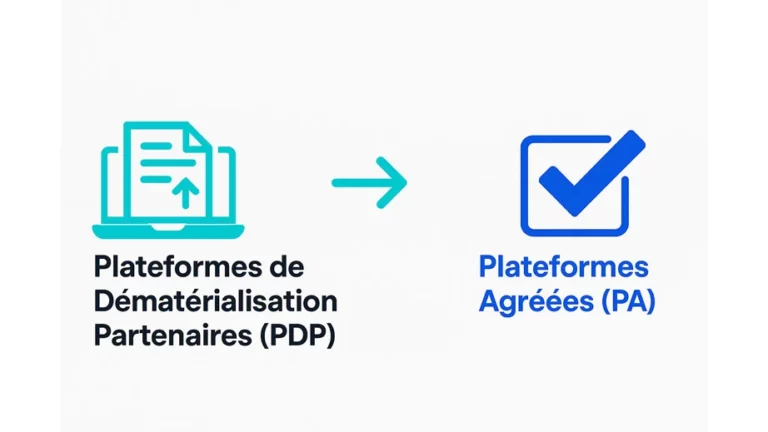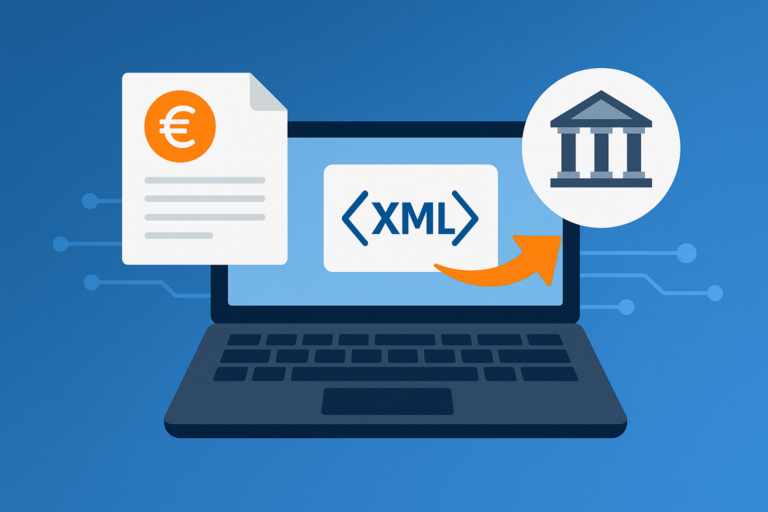Why is accounting automation becoming a priority?
At a time when the volume of financial documents is constantly increasing and regulations are changing rapidly (electronic invoicing will be mandatory from 2026),automated accounting is becoming a real performance driver for businesses.
Automating repetitive and time-consuming tasks not only saves time and reduces errors, it also makes accounting processes more reliable andoptimises financial management. It’s also a way of concentrating on higher added-value tasks.
To make this transition a success, it’s essential to prepare your business properly. This step-by-step checklist will help you identify the processes you need to automate, choose the right tools and involve your teams effectively.
1 / Identify the accounting processes to be automated
Before embarking on an automation project, it is essential to take stock of existing accounting processes. The aim is to identify the repetitive and time-consuming tasks that can be entrusted to a digital solution.
Here are the main accounting processes that can be easily automated using a platform like Azopio :
- Supplier invoice collection
Automatically retrieve invoices received by email, downloaded from a portal or captured via a mobile application. - Expense claim processing
Dematerialise receipts, automate data extraction (date, amount, VAT) and centralise expense claims. - Bank reconciliation
Automate the link between bank entries and the corresponding invoices or receipts. - Preparation of accounting entries
Automatically generate entries from the data collected and facilitate integration into the accounting software. - Legal archiving of documents
Guarantee compliance with digital archiving and retention obligations, with documents accessible at all times.
By identifying these processes upstream, you can prioritise actions and rapidly achieve tangible productivity gains.
2 / Mapping existing documentary and financial flows
To achieve successfulaccounting automation, it is essential to have a clear understanding of how documents and financial information currently circulate within the company. This step will enable you to identify the entry points for invoices, the channels used and any obstacles to automation.
Some key questions to ask yourself:
- Where do supplier invoices arrive?
In one or more mailboxes? On supplier portals? By paper mail? - How are payments made?
By bank transfer, credit card, direct debit, cheque? Are payment receipts easily accessible? - How are expense claims managed?
Do employees submit their receipts on paper, by email or via a mobile application? - How are documents filed and archived?
Are they stored on a shared server, in the cloud or in a physical filing cabinet? Is tracking centralised? - What software or tools are you already using?
ERP, accounting software, Excel spreadsheets, EDM, etc.
This mapping work helps to structure the automation approach and ensure seamless integration between the chosen solution (such as Azopio) and the tools
existing.
3 / Why choose a tailored, scalable solution like Azopio?
To automate your accounting processes effectively, the choice of solution is essential. The aim is to choose a tool that adapts to your organisation and evolves with your needs, in particular by anticipating future legal obligations (such as mandatory electronic invoicing).
With Azopio, you benefit from a comprehensive, scalable and intuitive platform that enables you to :
- centralise the collection of your invoices, expense claims and supporting documents in one place,
- automate data extraction using an intelligent OCR engine,
- prepareyour documents for legal archiving in full compliance,
- simply connect your Azopio space to your accounting software or your accountant,
- monitor your accounting flows in real time using clear dashboards,
- guarantee the security and confidentiality of your data (secure hosting, RGPD compliance).
A solution like Azopio will also support you over the long term: it is designed to incorporate regulatory changes (electronic invoicing 2026) and adapt to the needs of SMEs, associations, schools and accountancy firms.
4 / Involving teams and training users
Accounting automation is more than just a change of tool: it’s also a change of working method. To ensure successful adoption, it is important to involve the teams concerned (management, accounting, finance, executive management) from the outset.
A few best practices:
- Explain the benefits of automation
Show employees in concrete terms how much time they will save and how the tool will simplify their day-to-day work. - Training users
With an intuitive solution like Azopio, it doesn’t take long to get the hang of it. A short training or demonstration session can remove any obstacles and familiarise everyone with the platform. - Appointing an internal contact
Identify one or more internal contacts who can support the implementation, answer initial questions and pass on best practice to the teams.
By getting users on board right from the start of the project, you can ensure rapid deployment and fully effective automation.
5 / Monitoring and optimising the automated process
Setting up automated accounting is the first step. To reap the full benefits, it is important to monitor the system regularly and adjust the parameters if necessary.
A few best practices:
- Track key indicators
With Azopio, you can use dashboards to monitor the volume of documents processed, automation rates and processing times in real time. - Optimise processing rules
Workflows and processing rules can be adjusted to meet your company’s changing needs or the specific requirements of certain suppliers. - Preparing for legal changes
Regulations are changing rapidly, particularly with the arrival of mandatory electronic invoicing. A scalable solution like Azopio enables you to adapt continuously and remain compliant in all circumstances.
Regular monitoring will optimise your productivity gains and ensure that your accounting processes are always reliable and efficient.
Conclusion
Automated accounting has become a real performance driver for companies of all sizes and in all sectors. By reducing manual tasks, making data more reliable and improving the responsiveness of teams, it not only makes for greater productivity, but also provides better day-to-day control of financial management.
With the arrival of mandatory electronic invoicing, it’s essential to prepare for this transition now. With a scalable, easy-to-implement solution like Azopio, you can rapidly automate your accounting processes while supporting your teams through this change.
Ready to take the plunge into accounting automation?
Find out how Azopio can support you and simplify your day-to-day work.
Request a free demo or try Azopio today




